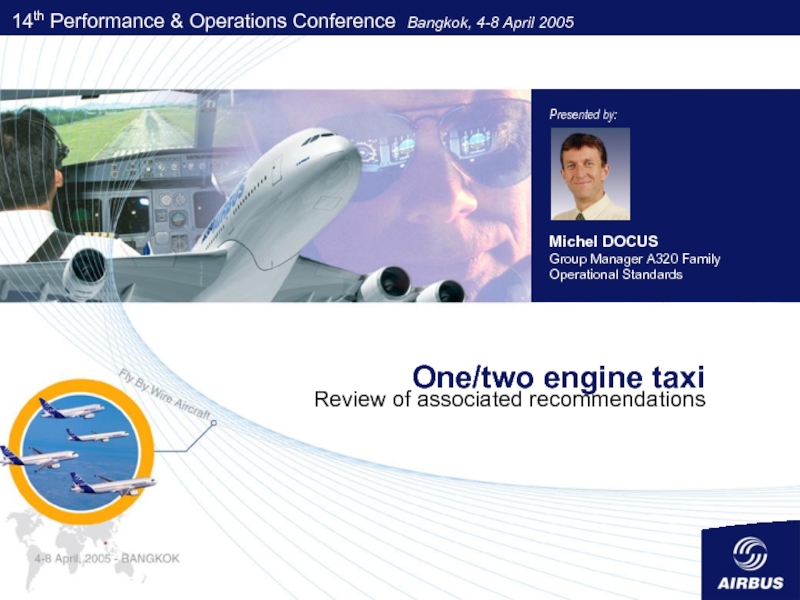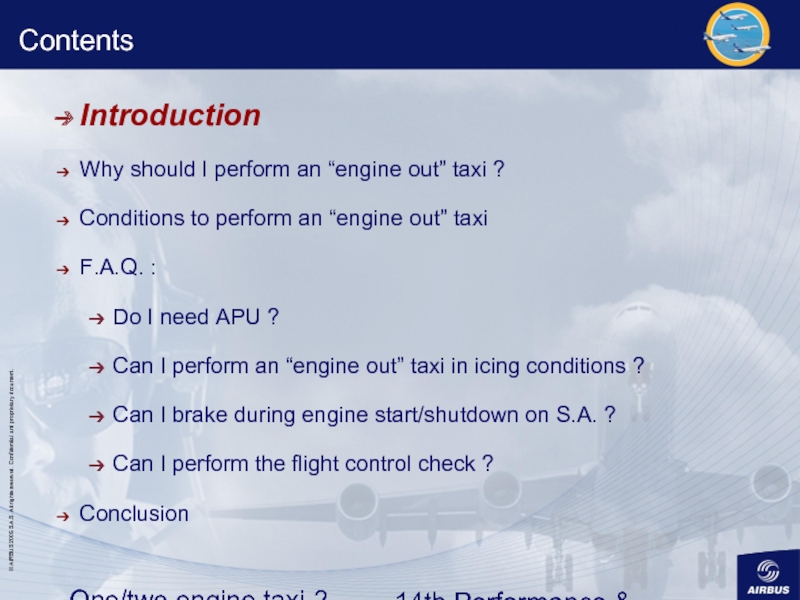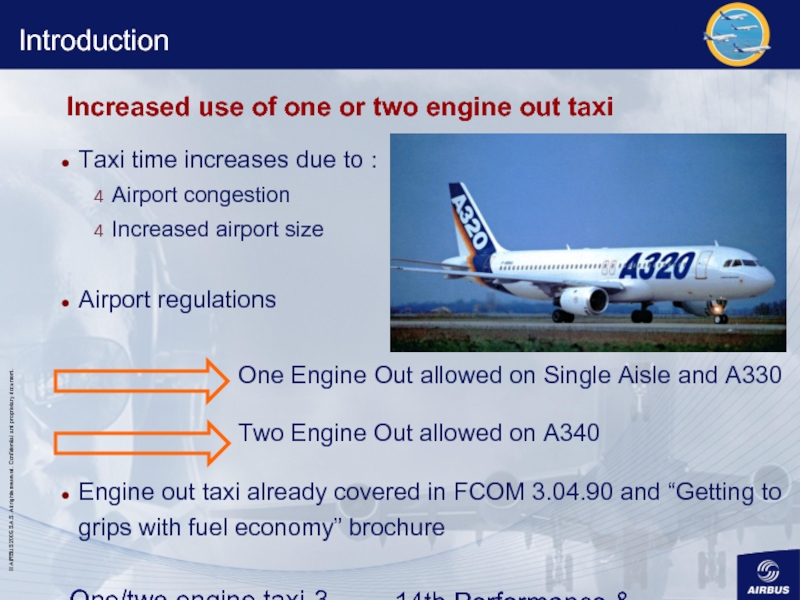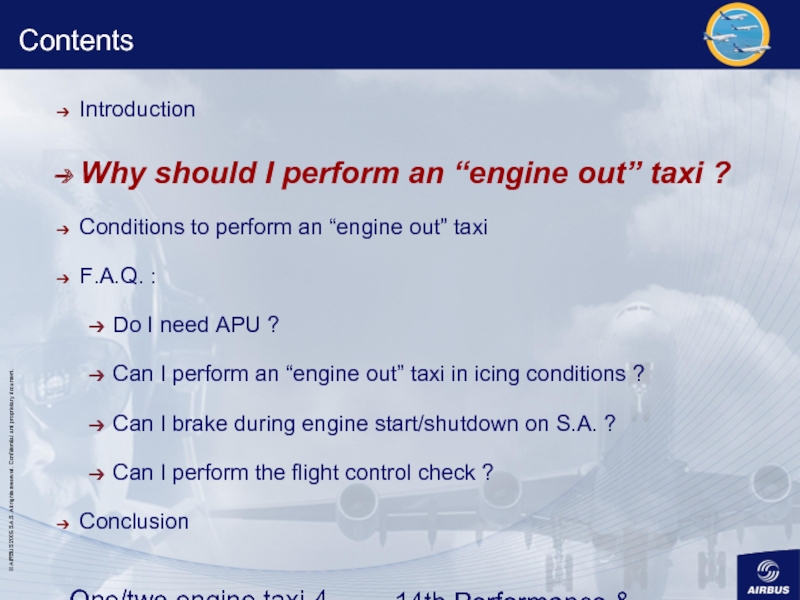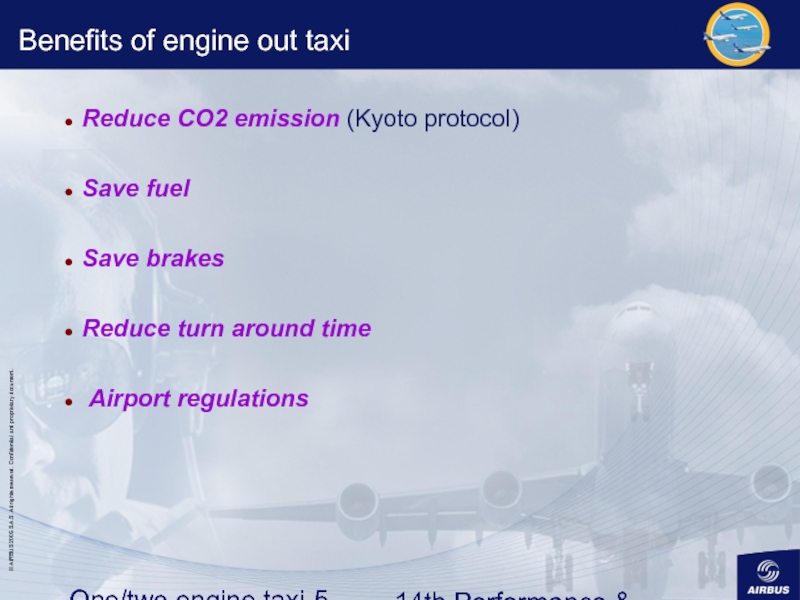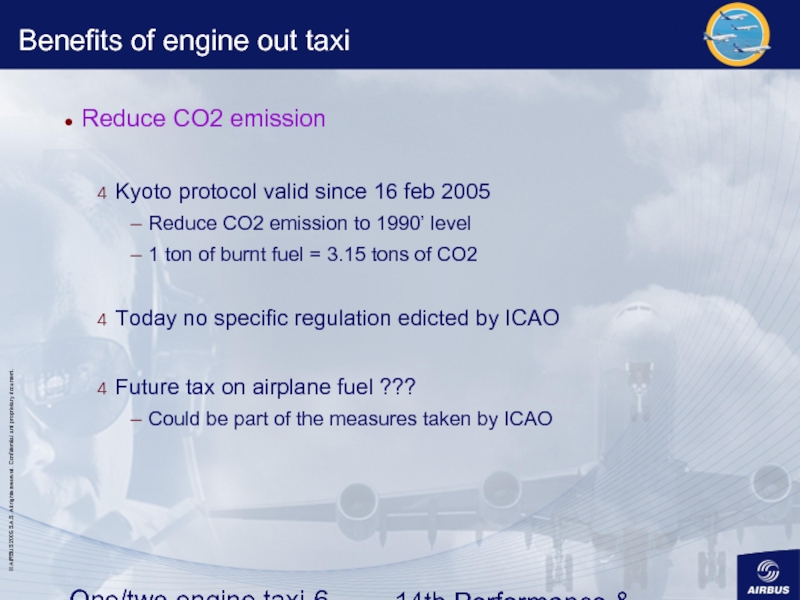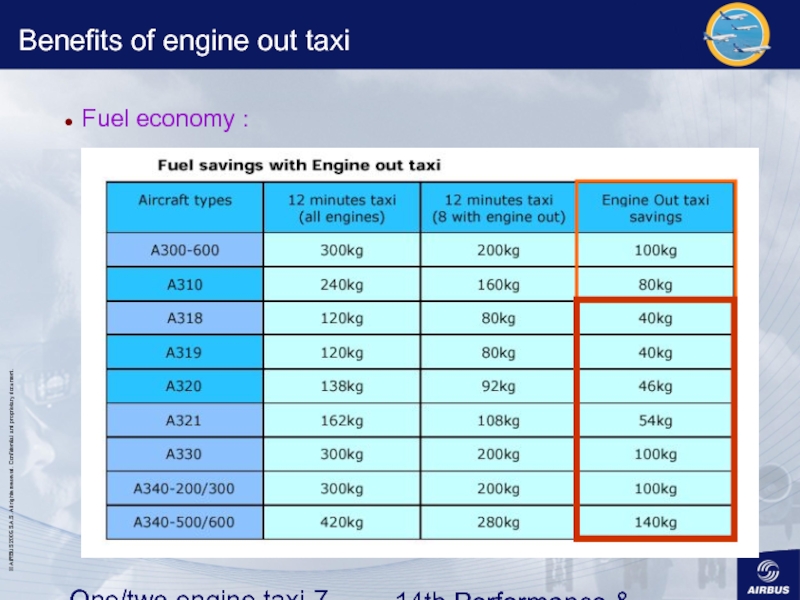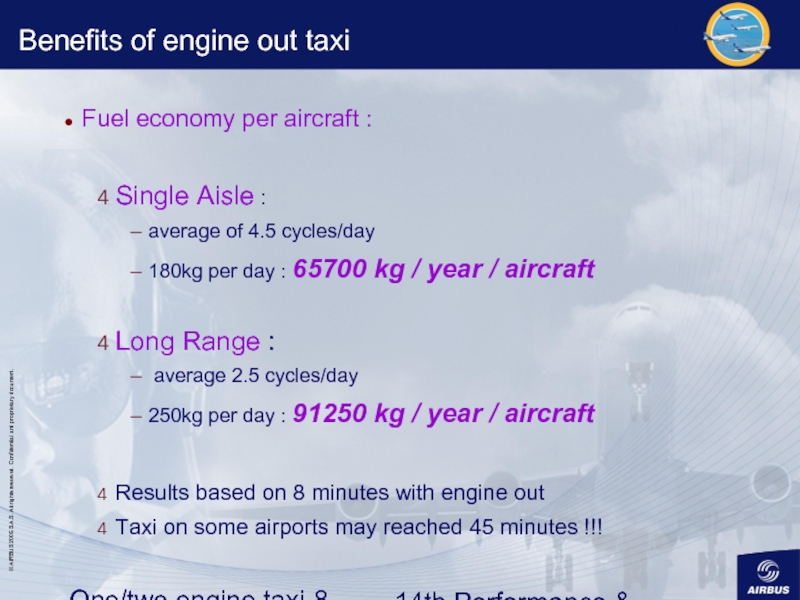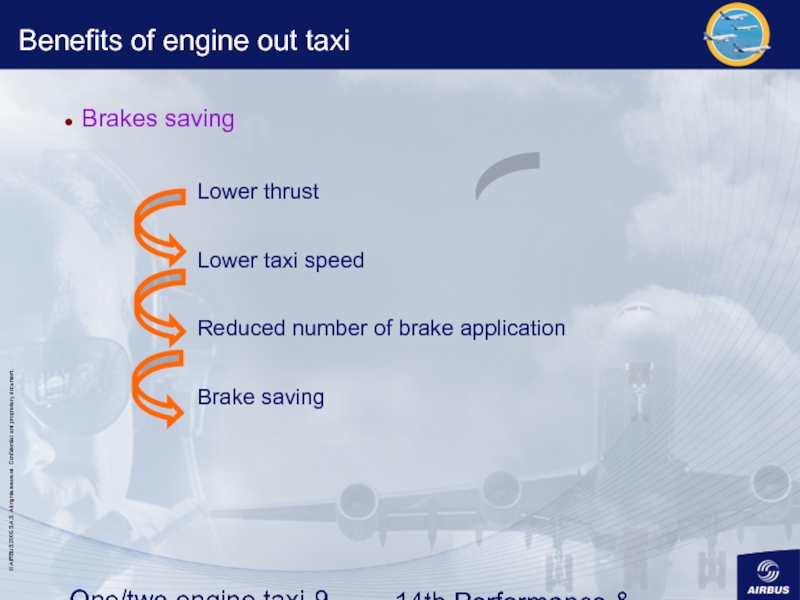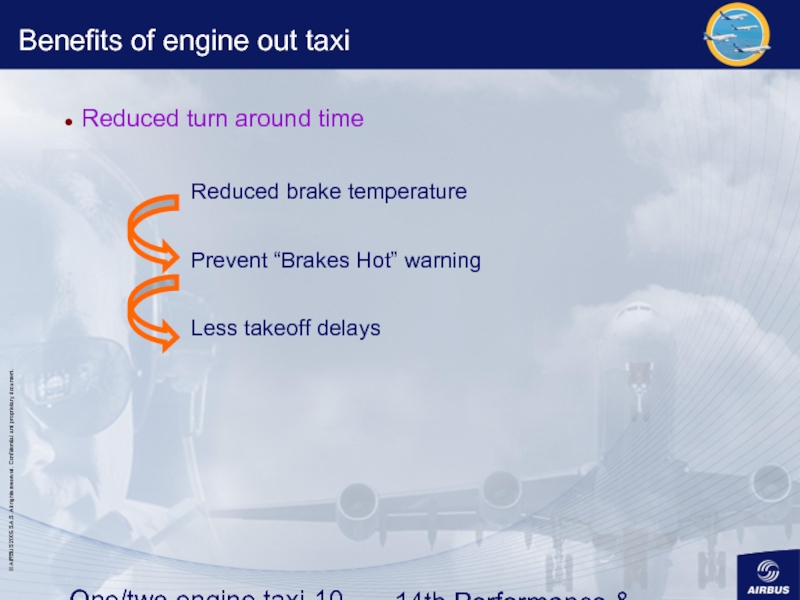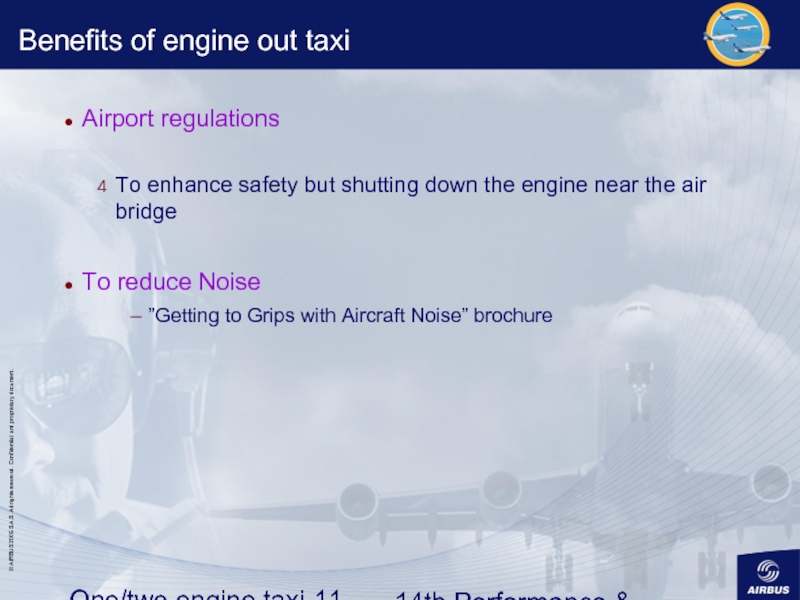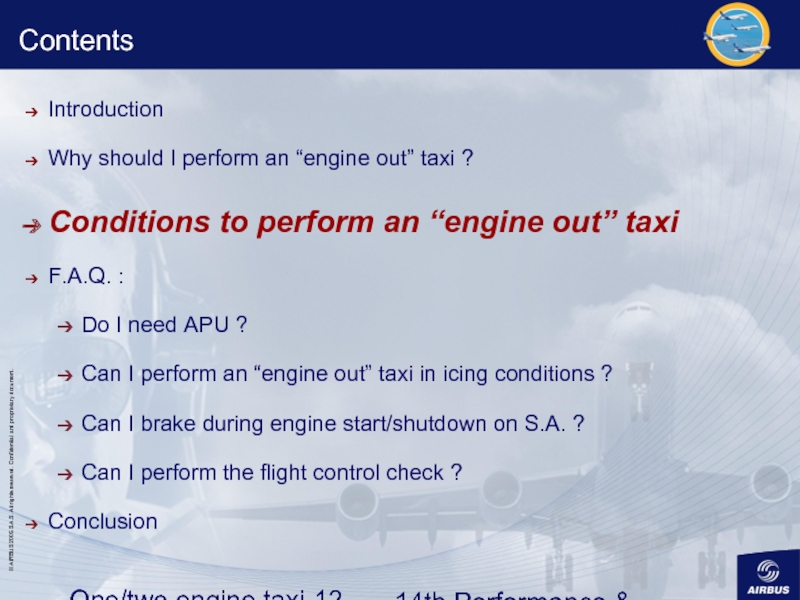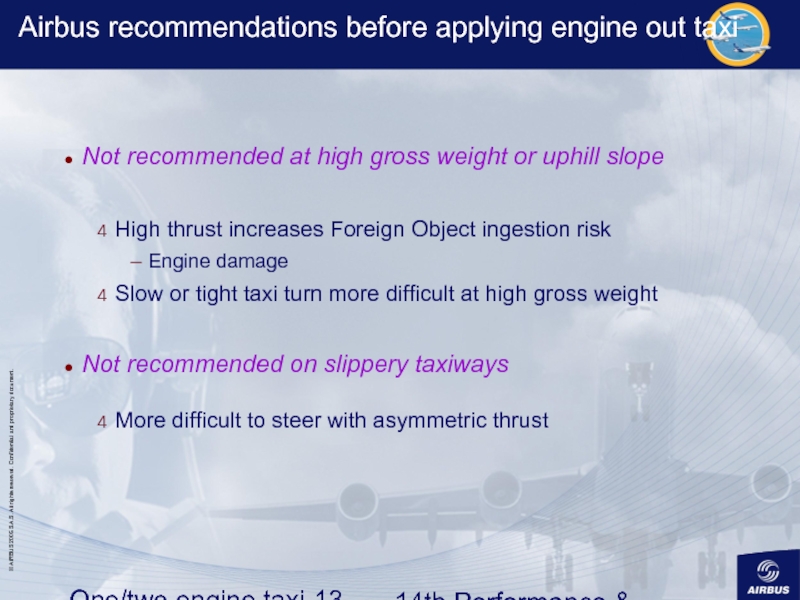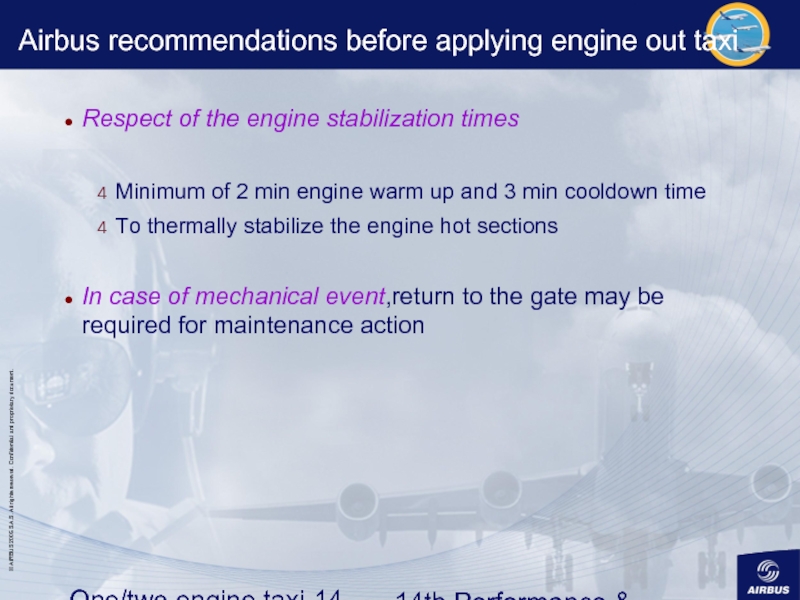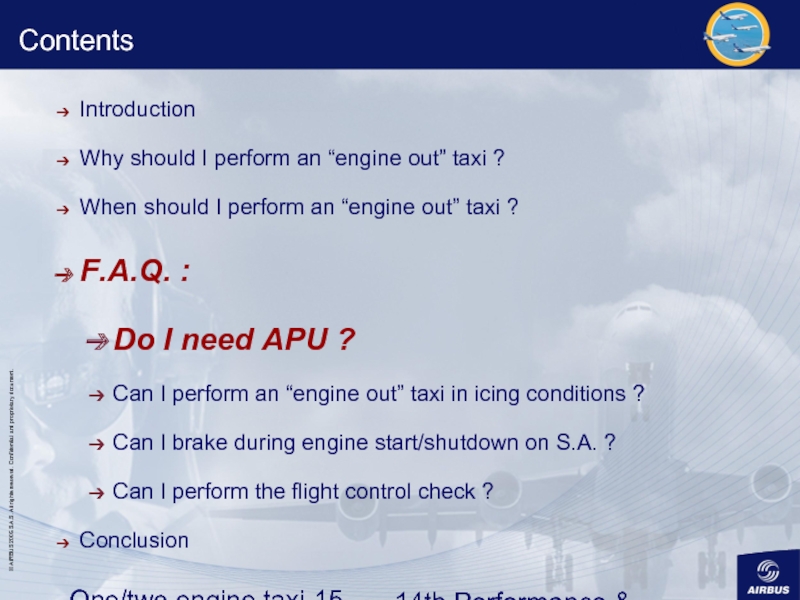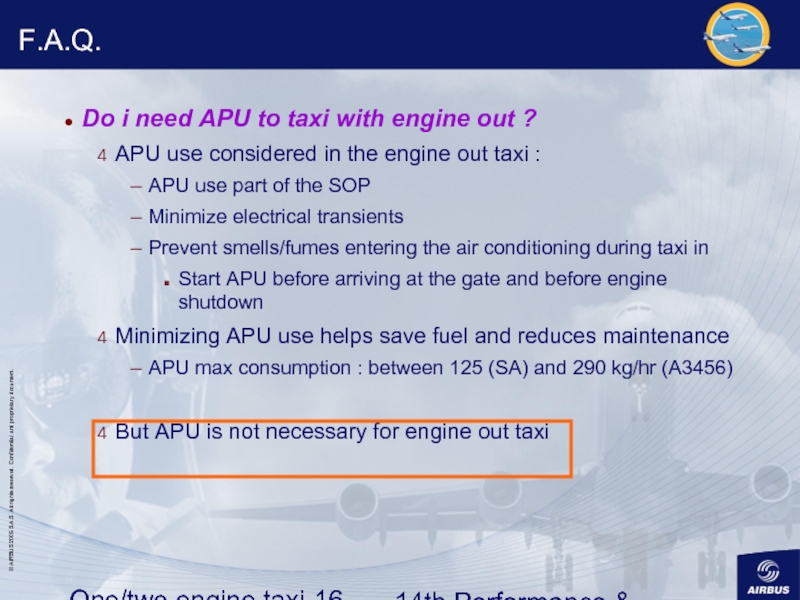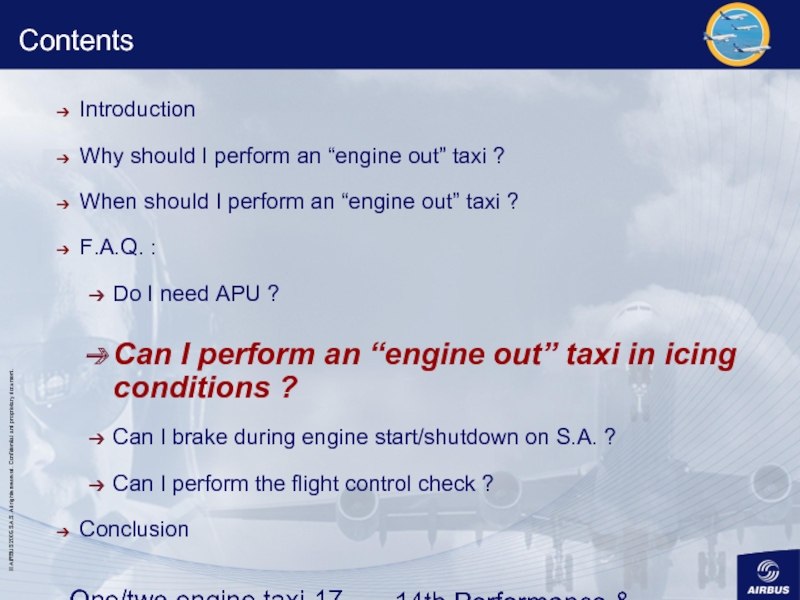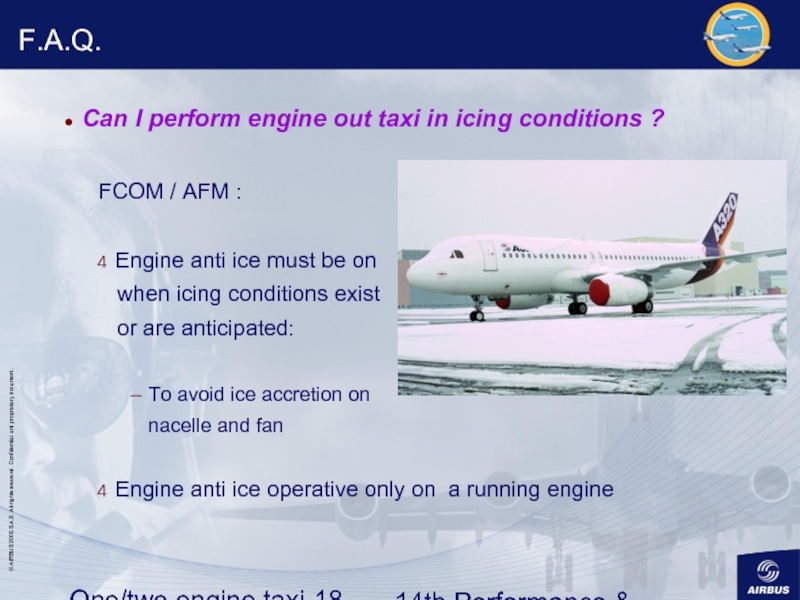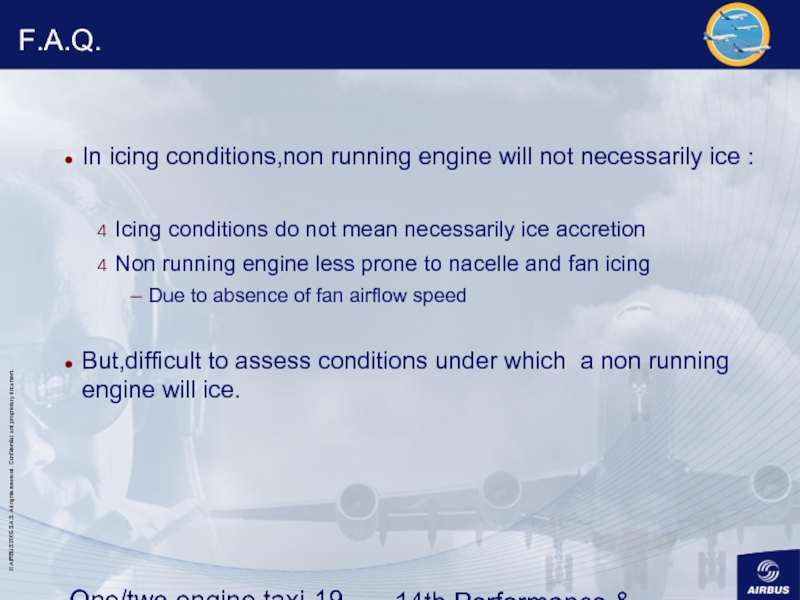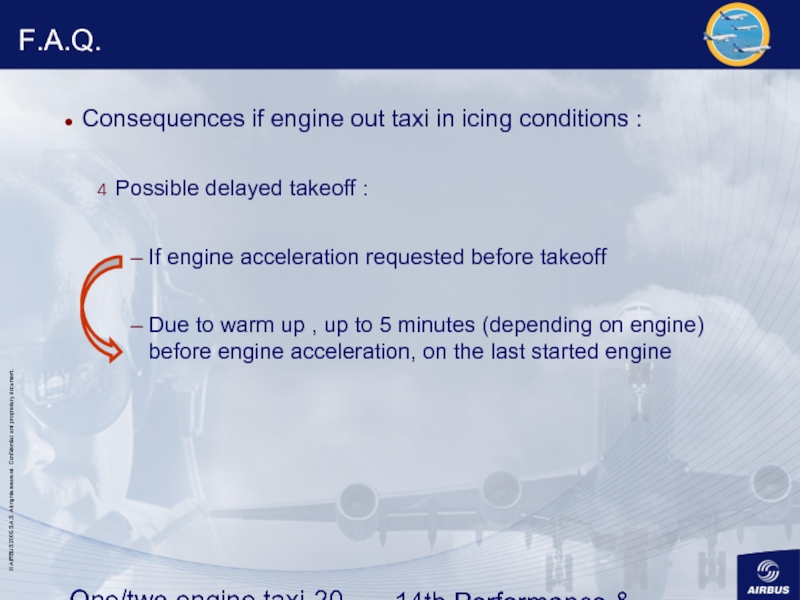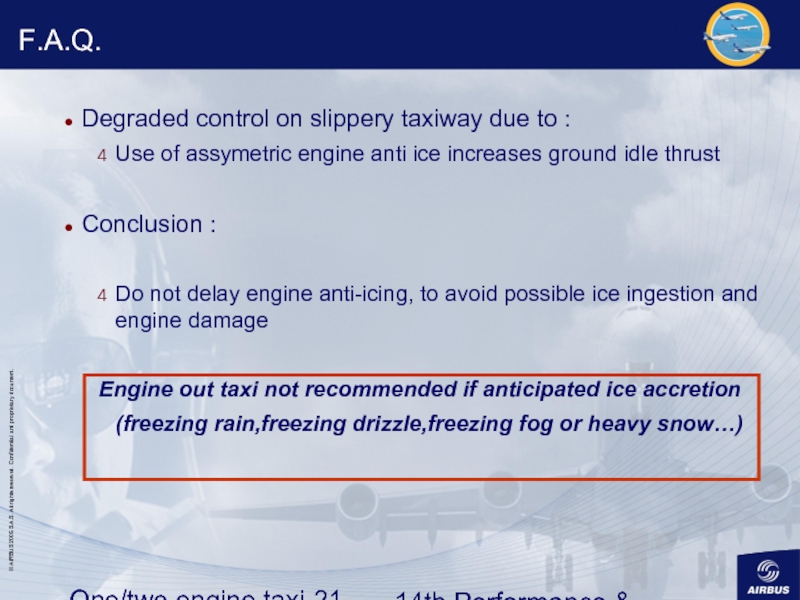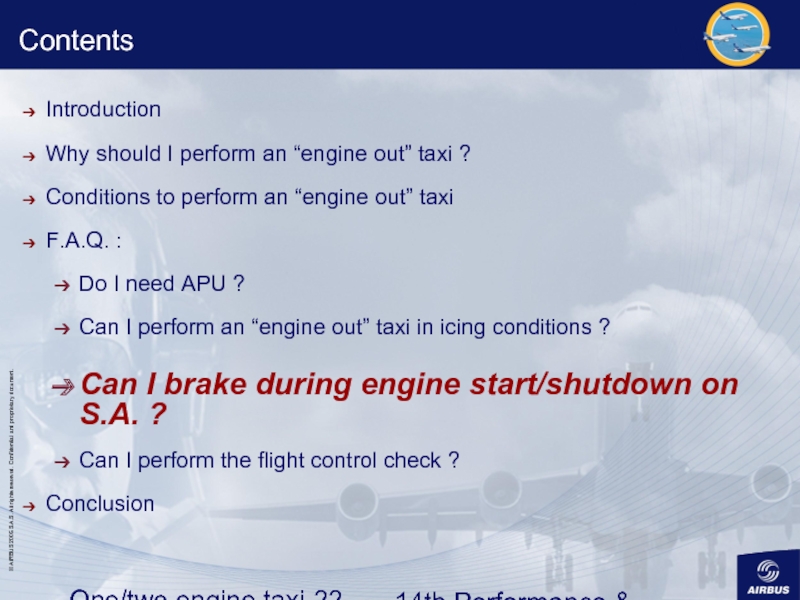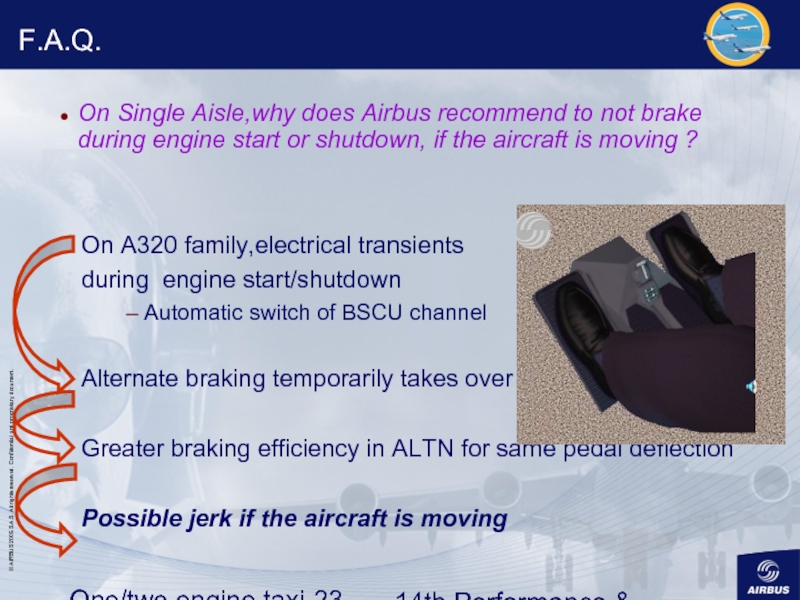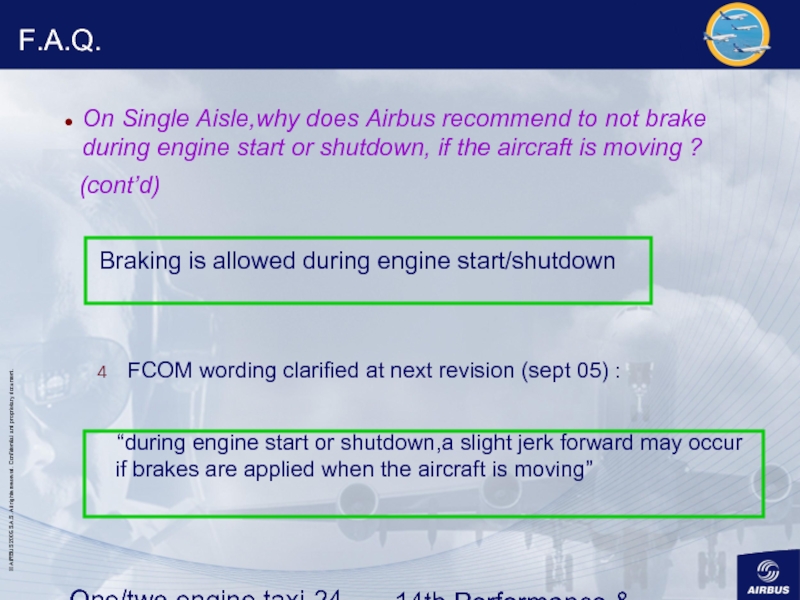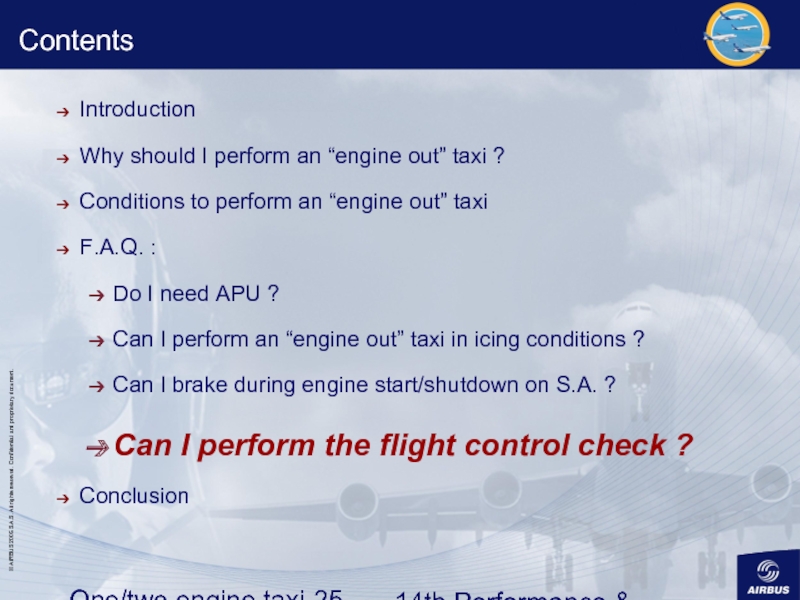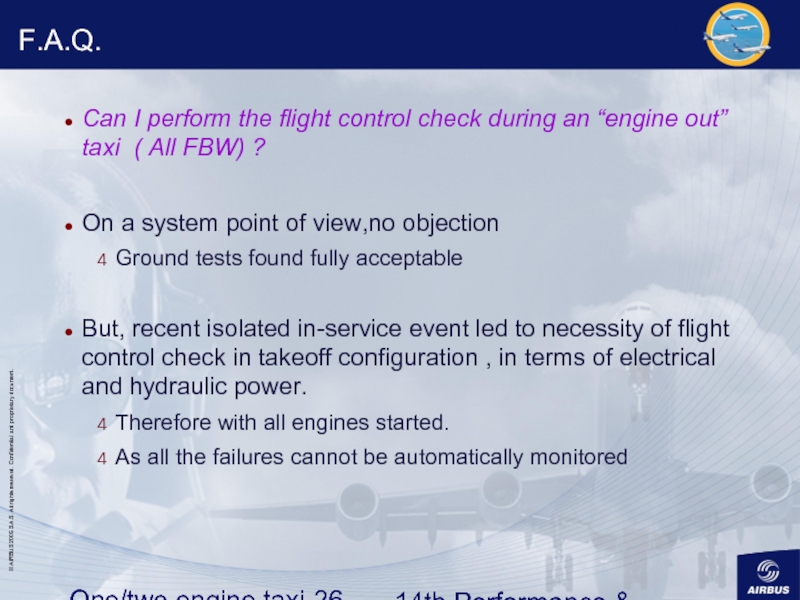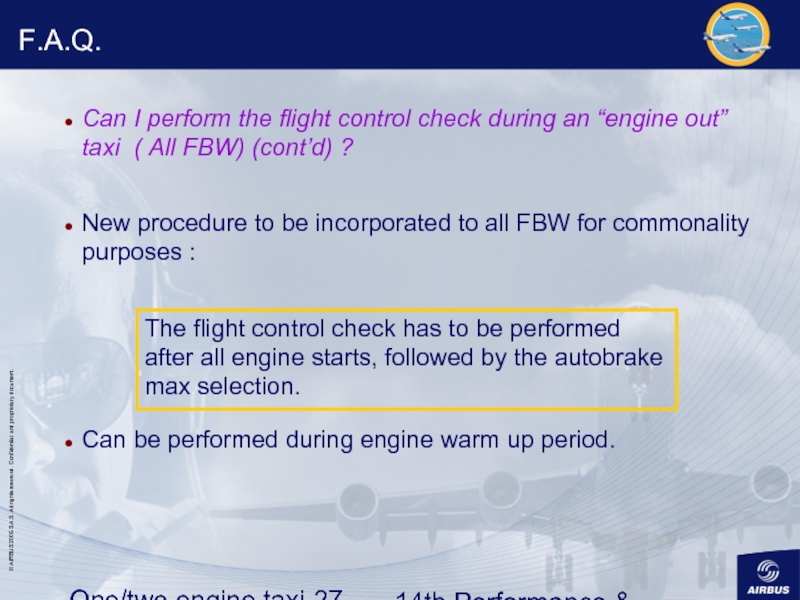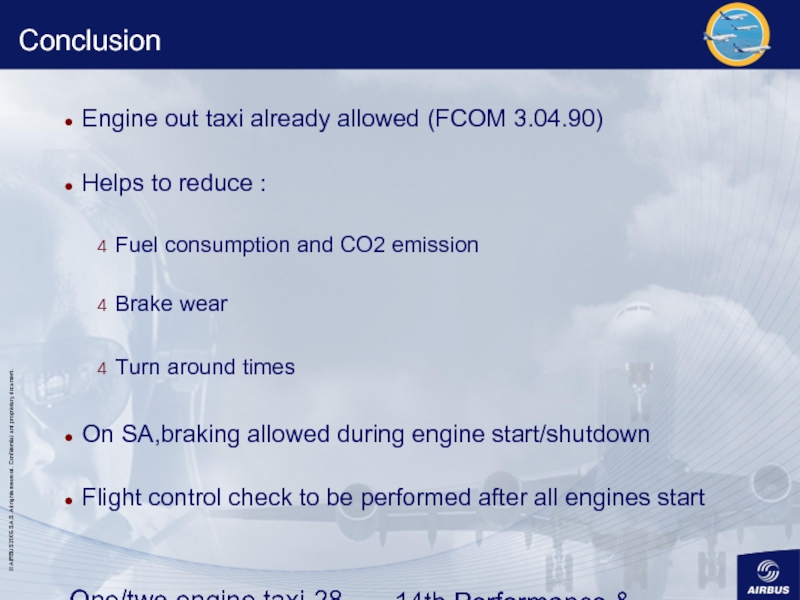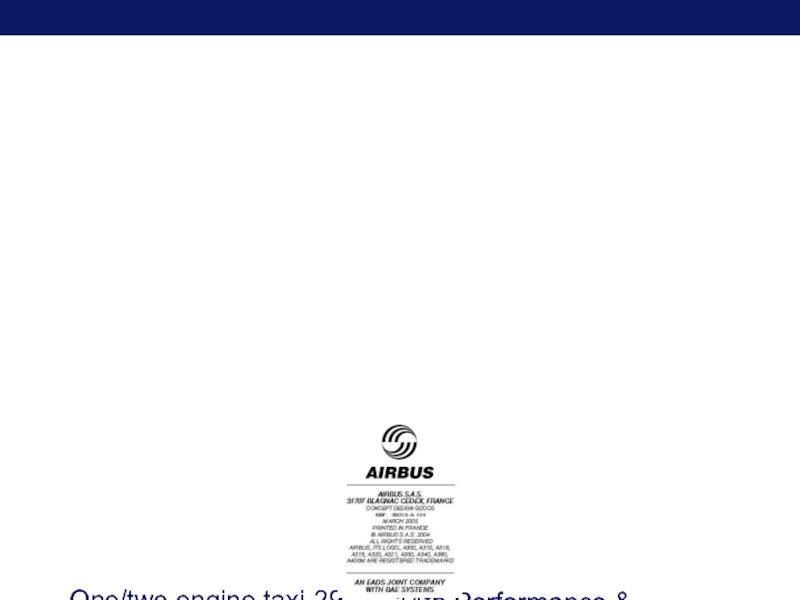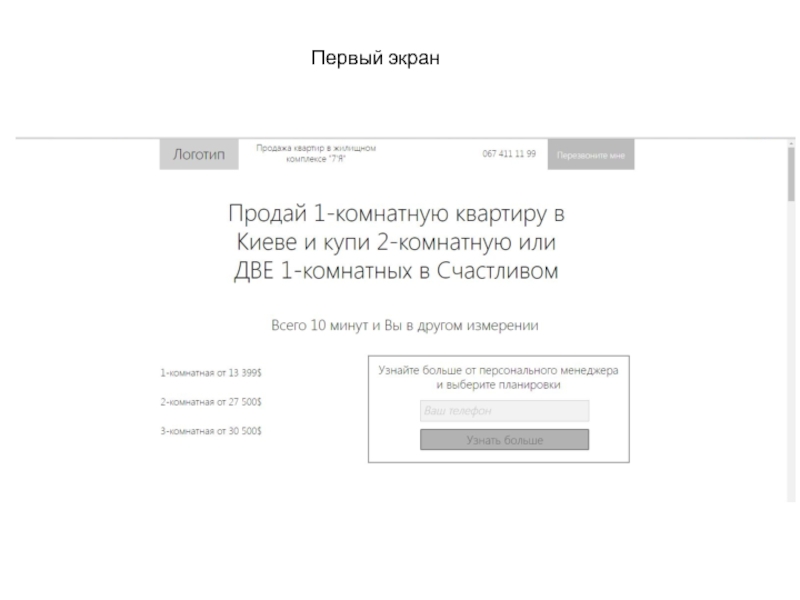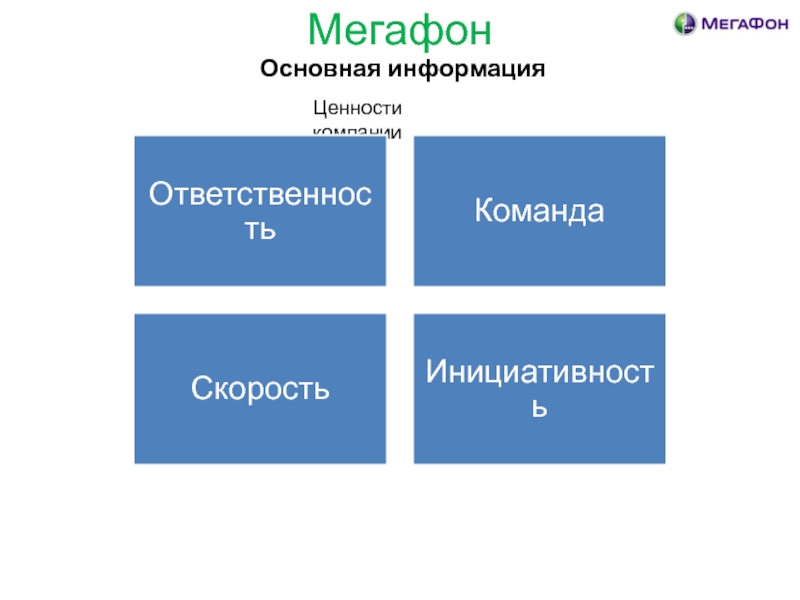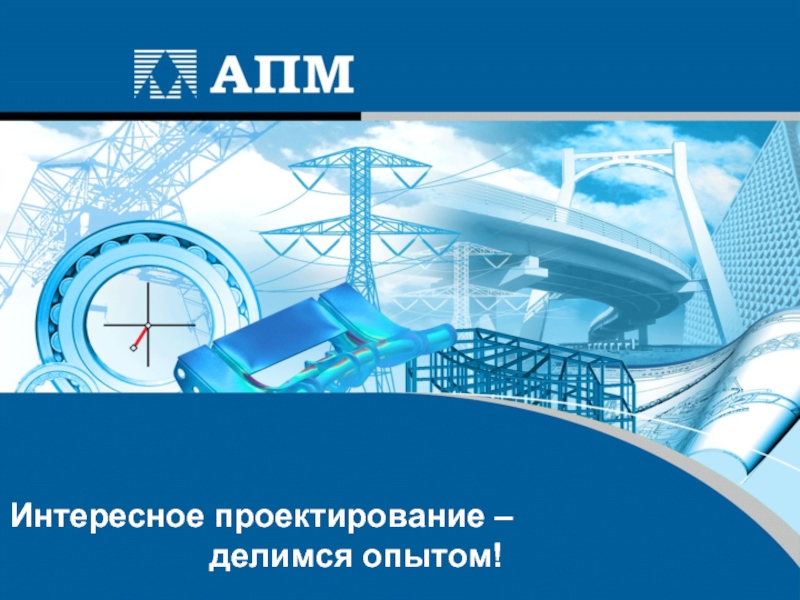Review of associated recommendations
- Главная
- Разное
- Дизайн
- Бизнес и предпринимательство
- Аналитика
- Образование
- Развлечения
- Красота и здоровье
- Финансы
- Государство
- Путешествия
- Спорт
- Недвижимость
- Армия
- Графика
- Культурология
- Еда и кулинария
- Лингвистика
- Английский язык
- Астрономия
- Алгебра
- Биология
- География
- Детские презентации
- Информатика
- История
- Литература
- Маркетинг
- Математика
- Медицина
- Менеджмент
- Музыка
- МХК
- Немецкий язык
- ОБЖ
- Обществознание
- Окружающий мир
- Педагогика
- Русский язык
- Технология
- Физика
- Философия
- Химия
- Шаблоны, картинки для презентаций
- Экология
- Экономика
- Юриспруденция
One/two engine taxi презентация
Содержание
- 1. One/two engine taxi
- 2. One/two engine taxi 14th Performance & Operations
- 3. One/two engine taxi 14th Performance & Operations
- 4. One/two engine taxi 14th Performance & Operations
- 5. One/two engine taxi 14th Performance & Operations
- 6. One/two engine taxi 14th Performance & Operations
- 7. One/two engine taxi 14th Performance & Operations
- 8. One/two engine taxi 14th Performance & Operations
- 9. One/two engine taxi 14th Performance & Operations
- 10. One/two engine taxi 14th Performance & Operations
- 11. One/two engine taxi 14th Performance & Operations
- 12. One/two engine taxi 14th Performance & Operations
- 13. One/two engine taxi 14th Performance & Operations
- 14. One/two engine taxi 14th Performance & Operations
- 15. One/two engine taxi 14th Performance & Operations
- 16. One/two engine taxi 14th Performance & Operations
- 17. One/two engine taxi 14th Performance & Operations
- 18. One/two engine taxi 14th Performance & Operations
- 19. One/two engine taxi 14th Performance & Operations
- 20. One/two engine taxi 14th Performance & Operations
- 21. One/two engine taxi 14th Performance & Operations
- 22. One/two engine taxi 14th Performance & Operations
- 23. One/two engine taxi 14th Performance & Operations
- 24. One/two engine taxi 14th Performance & Operations
- 25. One/two engine taxi 14th Performance & Operations
- 26. One/two engine taxi 14th Performance & Operations
- 27. One/two engine taxi 14th Performance & Operations
- 28. One/two engine taxi 14th Performance & Operations
- 29. One/two engine taxi 14th Performance & Operations Conference Bangkok, 4-8 April 2005
Слайд 114th Performance & Operations Conference Bangkok, 4-8 April 2005
One/two engine taxi
Слайд 2One/two engine taxi
14th Performance & Operations Conference Bangkok, 4-8 April 2005
Contents
Introduction
Why
Conditions to perform an “engine out” taxi
F.A.Q. :
Do I need APU ?
Can I perform an “engine out” taxi in icing conditions ?
Can I brake during engine start/shutdown on S.A. ?
Can I perform the flight control check ?
Conclusion
Слайд 3One/two engine taxi
14th Performance & Operations Conference Bangkok, 4-8 April 2005
Introduction
Taxi
Airport congestion
Increased airport size
Airport regulations
One Engine Out allowed on Single Aisle and A330
Two Engine Out allowed on A340
Engine out taxi already covered in FCOM 3.04.90 and “Getting to grips with fuel economy” brochure
Increased use of one or two engine out taxi
Слайд 4One/two engine taxi
14th Performance & Operations Conference Bangkok, 4-8 April 2005
Contents
Introduction
Why
Conditions to perform an “engine out” taxi
F.A.Q. :
Do I need APU ?
Can I perform an “engine out” taxi in icing conditions ?
Can I brake during engine start/shutdown on S.A. ?
Can I perform the flight control check ?
Conclusion
Слайд 5One/two engine taxi
14th Performance & Operations Conference Bangkok, 4-8 April 2005
Benefits
Reduce CO2 emission (Kyoto protocol)
Save fuel
Save brakes
Reduce turn around time
Airport regulations
Слайд 6One/two engine taxi
14th Performance & Operations Conference Bangkok, 4-8 April 2005
Benefits
Reduce CO2 emission
Kyoto protocol valid since 16 feb 2005
Reduce CO2 emission to 1990’ level
1 ton of burnt fuel = 3.15 tons of CO2
Today no specific regulation edicted by ICAO
Future tax on airplane fuel ???
Could be part of the measures taken by ICAO
Слайд 7One/two engine taxi
14th Performance & Operations Conference Bangkok, 4-8 April 2005
Benefits
Fuel economy :
Слайд 8One/two engine taxi
14th Performance & Operations Conference Bangkok, 4-8 April 2005
Benefits
Fuel economy per aircraft :
Single Aisle :
average of 4.5 cycles/day
180kg per day : 65700 kg / year / aircraft
Long Range :
average 2.5 cycles/day
250kg per day : 91250 kg / year / aircraft
Results based on 8 minutes with engine out
Taxi on some airports may reached 45 minutes !!!
Слайд 9One/two engine taxi
14th Performance & Operations Conference Bangkok, 4-8 April 2005
Benefits
Brakes saving
Lower thrust
Lower taxi speed
Reduced number of brake application
Brake saving
Слайд 10One/two engine taxi
14th Performance & Operations Conference Bangkok, 4-8 April 2005
Benefits
Reduced turn around time
Reduced brake temperature
Prevent “Brakes Hot” warning
Less takeoff delays
Слайд 11One/two engine taxi
14th Performance & Operations Conference Bangkok, 4-8 April 2005
Benefits
Airport regulations
To enhance safety but shutting down the engine near the air bridge
To reduce Noise
”Getting to Grips with Aircraft Noise” brochure
Слайд 12One/two engine taxi
14th Performance & Operations Conference Bangkok, 4-8 April 2005
Contents
Introduction
Why
Conditions to perform an “engine out” taxi
F.A.Q. :
Do I need APU ?
Can I perform an “engine out” taxi in icing conditions ?
Can I brake during engine start/shutdown on S.A. ?
Can I perform the flight control check ?
Conclusion
Слайд 13One/two engine taxi
14th Performance & Operations Conference Bangkok, 4-8 April 2005
Airbus
Not recommended at high gross weight or uphill slope
High thrust increases Foreign Object ingestion risk
Engine damage
Slow or tight taxi turn more difficult at high gross weight
Not recommended on slippery taxiways
More difficult to steer with asymmetric thrust
Слайд 14One/two engine taxi
14th Performance & Operations Conference Bangkok, 4-8 April 2005
Airbus
Respect of the engine stabilization times
Minimum of 2 min engine warm up and 3 min cooldown time
To thermally stabilize the engine hot sections
In case of mechanical event,return to the gate may be required for maintenance action
Слайд 15One/two engine taxi
14th Performance & Operations Conference Bangkok, 4-8 April 2005
Contents
Introduction
Why
When should I perform an “engine out” taxi ?
F.A.Q. :
Do I need APU ?
Can I perform an “engine out” taxi in icing conditions ?
Can I brake during engine start/shutdown on S.A. ?
Can I perform the flight control check ?
Conclusion
Слайд 16One/two engine taxi
14th Performance & Operations Conference Bangkok, 4-8 April 2005
F.A.Q.
Do
APU use considered in the engine out taxi :
APU use part of the SOP
Minimize electrical transients
Prevent smells/fumes entering the air conditioning during taxi in
Start APU before arriving at the gate and before engine shutdown
Minimizing APU use helps save fuel and reduces maintenance
APU max consumption : between 125 (SA) and 290 kg/hr (A3456)
But APU is not necessary for engine out taxi
Слайд 17One/two engine taxi
14th Performance & Operations Conference Bangkok, 4-8 April 2005
Contents
Introduction
Why
When should I perform an “engine out” taxi ?
F.A.Q. :
Do I need APU ?
Can I perform an “engine out” taxi in icing conditions ?
Can I brake during engine start/shutdown on S.A. ?
Can I perform the flight control check ?
Conclusion
Слайд 18One/two engine taxi
14th Performance & Operations Conference Bangkok, 4-8 April 2005
F.A.Q.
Can I perform engine out taxi in icing conditions ?
FCOM / AFM :
Engine anti ice must be on
when icing conditions exist
or are anticipated:
To avoid ice accretion on
nacelle and fan
Engine anti ice operative only on a running engine
Слайд 19One/two engine taxi
14th Performance & Operations Conference Bangkok, 4-8 April 2005
F.A.Q.
In
Icing conditions do not mean necessarily ice accretion
Non running engine less prone to nacelle and fan icing
Due to absence of fan airflow speed
But,difficult to assess conditions under which a non running engine will ice.
Слайд 20One/two engine taxi
14th Performance & Operations Conference Bangkok, 4-8 April 2005
F.A.Q.
Consequences
Possible delayed takeoff :
If engine acceleration requested before takeoff
Due to warm up , up to 5 minutes (depending on engine) before engine acceleration, on the last started engine
Слайд 21One/two engine taxi
14th Performance & Operations Conference Bangkok, 4-8 April 2005
F.A.Q.
Degraded
Use of assymetric engine anti ice increases ground idle thrust
Conclusion :
Do not delay engine anti-icing, to avoid possible ice ingestion and engine damage
Engine out taxi not recommended if anticipated ice accretion (freezing rain,freezing drizzle,freezing fog or heavy snow…)
Слайд 22One/two engine taxi
14th Performance & Operations Conference Bangkok, 4-8 April 2005
Contents
Introduction
Why
Conditions to perform an “engine out” taxi
F.A.Q. :
Do I need APU ?
Can I perform an “engine out” taxi in icing conditions ?
Can I brake during engine start/shutdown on S.A. ?
Can I perform the flight control check ?
Conclusion
Слайд 23One/two engine taxi
14th Performance & Operations Conference Bangkok, 4-8 April 2005
F.A.Q.
On
On A320 family,electrical transients
during engine start/shutdown
Automatic switch of BSCU channel
Alternate braking temporarily takes over
Greater braking efficiency in ALTN for same pedal deflection
Possible jerk if the aircraft is moving
Слайд 24One/two engine taxi
14th Performance & Operations Conference Bangkok, 4-8 April 2005
F.A.Q.
On
(cont’d)
Braking is allowed during engine start/shutdown
FCOM wording clarified at next revision (sept 05) :
“during engine start or shutdown,a slight jerk forward may occur if brakes are applied when the aircraft is moving”
Слайд 25One/two engine taxi
14th Performance & Operations Conference Bangkok, 4-8 April 2005
Contents
Introduction
Why
Conditions to perform an “engine out” taxi
F.A.Q. :
Do I need APU ?
Can I perform an “engine out” taxi in icing conditions ?
Can I brake during engine start/shutdown on S.A. ?
Can I perform the flight control check ?
Conclusion
Слайд 26One/two engine taxi
14th Performance & Operations Conference Bangkok, 4-8 April 2005
F.A.Q.
Can
On a system point of view,no objection
Ground tests found fully acceptable
But, recent isolated in-service event led to necessity of flight control check in takeoff configuration , in terms of electrical and hydraulic power.
Therefore with all engines started.
As all the failures cannot be automatically monitored
Слайд 27One/two engine taxi
14th Performance & Operations Conference Bangkok, 4-8 April 2005
F.A.Q.
Can
New procedure to be incorporated to all FBW for commonality purposes :
Can be performed during engine warm up period.
The flight control check has to be performed after all engine starts, followed by the autobrake max selection.
Слайд 28One/two engine taxi
14th Performance & Operations Conference Bangkok, 4-8 April 2005
Conclusion
Engine
Helps to reduce :
Fuel consumption and CO2 emission
Brake wear
Turn around times
On SA,braking allowed during engine start/shutdown
Flight control check to be performed after all engines start
